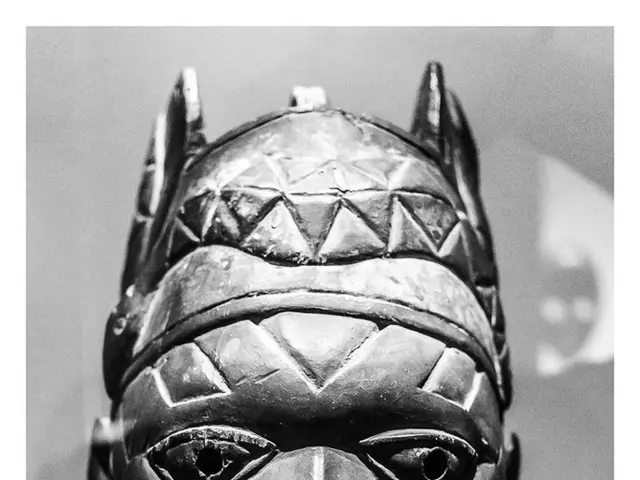Recognizing signs: Separating age spots from skin cancer
Age spots, a common sign of aging, might resemble some forms of skin cancer, but they're completely harmless. Here's the lowdown on how to tell them apart and deal with both conditions.
Age Spots vs. Skin Cancer: Lights, Camera, Action!
Age spots, also known as liver spots or solar lentigines, usually take the form of darkened patches on the skin, mostly tan or brown. They can be round or oval, and generally don't cause any discomfort or itchiness[1]. Unlike skin cancer, they pose no harm to your health and usually don't need treatment, unless you want to get rid of them for cosmetic reasons.
Skin cancer, on the other hand, can appear in various forms like basal cell carcinoma and squamous cell carcinoma[3]. Squamous cell carcinomas typically show up as firm red nodules or flat lesions with a scaly surface, while basal cell carcinomas often appear as small, shiny bumps.
Another condition that can mimic age spots is actinic keratosis, which appears as crusty or scaly patches, often red or pink[4][5].
Symptom Showdown
Age spots are usually asymptomatic, meaning they don't cause any discomfort or pain. On the other hand, skin cancer symptoms can include changes in the size, shape, color, or texture of a mole or other skin growth, bleeding, itching, or pain[2]. Actinic keratoses can be sensitive to touch and may feel rough or dry. If these lesions become inflamed, harden, grow quickly, bleed, or become red, they should be evaluated promptly by a dermatologist[2][5].
Series Finale: Treatment Time!
For age spots, treatment is generally aesthetic, involving methods like laser therapy or chemical peels to lighten the spots, but it's not necessary unless you want to improve your appearance[1].
Skin cancer treatment options depend on the type and stage of cancer. Common treatments include surgical excision, radiation therapy, and topical treatments for early-stage cancers[4].
Actinic keratosis requires treatment to prevent progression to squamous cell carcinoma[4][5]. Treatment options include cryotherapy (freezing the lesions), topical treatments like fluorouracil or imiquimod, and surgical excision for larger lesions[4][5].
Remember, while age spots are simply a part of getting older, promptly identifying and treating actinic keratosis and skin cancer is crucial to prevent further health issues. Always consult a dermatologist if you notice any unusual changes to your skin.
- While age spots are a common sign of aging and pose no harm to health, skin cancers like basal cell carcinoma and squamous cell carcinoma can appear in various forms and should be identified and treated promptly to prevent further health issues.
- Unlike age spots, actinic keratosis, another condition that can mimic age spots, requires treatment to prevent progression to squamous cell carcinoma, as it can appear as crusty or scaly patches and may need evaluation by a dermatologist if lesions become inflamed, harden, grow quickly, bleed, or become red.
- During a medical-condition check-up focusing on skin-care and skin-conditions, it is important to not only understand age spots but also be aware of other skin cancers such as melanoma, as various forms of skin cancer might resemble age spots and should be addressed by oncology and dermatology professionals to ensure proper diagnosis and treatment.
- As part of a senior's health-and-wellness routine, regular skin check-ups with a dermatologist can help identify skin cancers early, including the potentially dangerous melanoma, making science-backed treatments more effective and ensuring the overall well-being of seniors.
- Encouraging skin-care awareness and proper identification of skin conditions like age spots, actinic keratosis, and skin cancer can lead to early detection, effective treatment, and a greater understanding of these medical-conditions, ultimately contributing to improved health-and-wellness for people of all ages.







